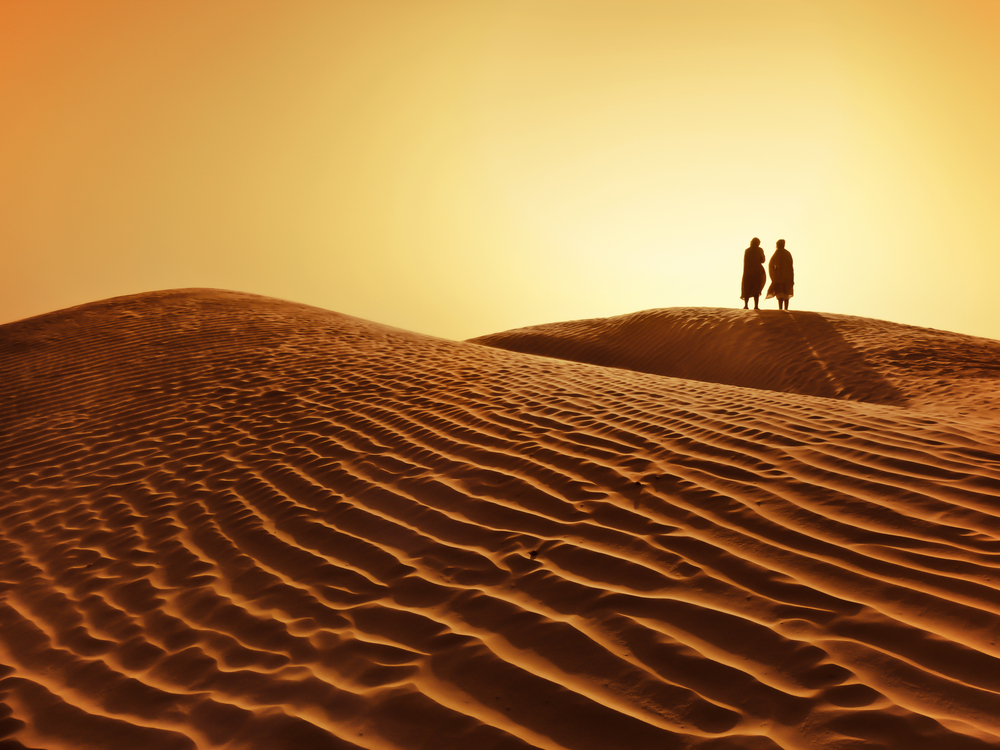So how important is colour of clothing when it comes to heat stress?
- By Ross Di Corleto
- 11/04/2015
- 7 Comments
I was standing in line at a bank recently and two young ladies behind me were having a quite audible discussion about what they were going to wear the next day at a horse racing event. The discussion got around to the colour and I heard one of them say. “Which dress do you think I should wear, the pale yellow patterned dress or my new black one?” To which her friend replied, “I’d go for the yellow one as we will be out in the sun and the black one will get too hot.” Good advice? Well generally you would say yes but it’s not quite that straightforward. How big an impact is colour on heat stress when it comes to clothing?
There have been studies on cattle and pigeons that show that white hair and feathers allow for better penetration of short wave radiation to the skin. This can result in a higher heat flow inward. Also, what about the Bedouins in the Sinai desert, why do they wear long black robes?
The military have been investigating the issue of clothing for many years particularly around the time of the Second World War when the action began to move down into the Pacific theatre. Blum (1945) carried out some interesting work with military clothing and the impact of reflective properties and came to the conclusion, “that the amount of saving of solar heat load to be anticipated by improvement of the reflecting properties of military uniform fabrics is not great….”
In the same paper a 8.2 oz (232 g) khaki cotton shirt had a 43.7% contribution to the heat load with 56.3% reflected compared to a darker cotton herringbone twill which rated at 73.7% heat load and 26.3% reflected. A white cotton percale shirt (a weave often used in sheets) came in at 33.2% heat load and 66.8 % reflected but also 0.5% transmitted radiation which was considered to be absorbed by the skin. There is more up to date data in ISO 9920
Getting back to our Bedouins in the Sinai desert, an interesting paper by Shkolnik et al (1980) demonstrated that the black robes did indeed gain two to three times as much heat in the sun than the corresponding garment in white. However, the greater convection and air movement beneath the black robe resulted in the same temperature for the airspace between the robe and the skin. In fact they suggested that: “the greater convection beneath the black robe might make it feel more comfortable.” This ventilation allows the body’s built in evaporative air conditioning system to come into play with the sweat generated by the body evaporated by the moving air.
So where does this leave us, what should the young lady wear to the races? My advice would be that if the dresses are close fitting she would be better off in the yellow dress but if they are loose fitting and well ventilated then either would probably do.
Bottom Line
Colour does have an impact and can result in an increase in the cloth temperature and this can be transmitted to the skin adding to the heat load. Of more importance is that the air can circulate underneath the clothing to evaporate the sweat and hence cool the skin. Bring on the kilt!
Want to know more ?
Blum, H. F., (1945). The solar heat load: its relationship to total heat load and its relative importance in the design of clothing. J. Clinical Invest. 24.5: 712
Shkolnik, A., Taylor, C. R., Finch, V., Borut, A., Why do Bedouins wear black robes in hot deserts? Nature Vol. 283: 24 January 1980
ISO 9920 (2007). Ergonomics of the thermal environment – Estimation of the thermal insulation and evaporative resistance of a clothing ensemble. International Organisation for Standardisation, Geneva.
Lee, D. H. K., and Lemons, H., Clothing for global man. Geographical Review, Vol. 39, No 2 (April 1949). Pp. 181 – 213

 Copyright © 2025
Copyright © 2025
Hello Ross Di Corleto, thanks for this quality post. Thumbs UP! your post has really helpful
Thank you Ian.
quality product thumbs up!
thank you thethermalenvironment for giving me wonderful information
Thank you
I was suggested this blog via my cousin. I am now not certain whether this put up is written by means of him as nobody else recognize such unique
about my problem. You’re wonderful! Thank you!
Pleased we could be of assistance.